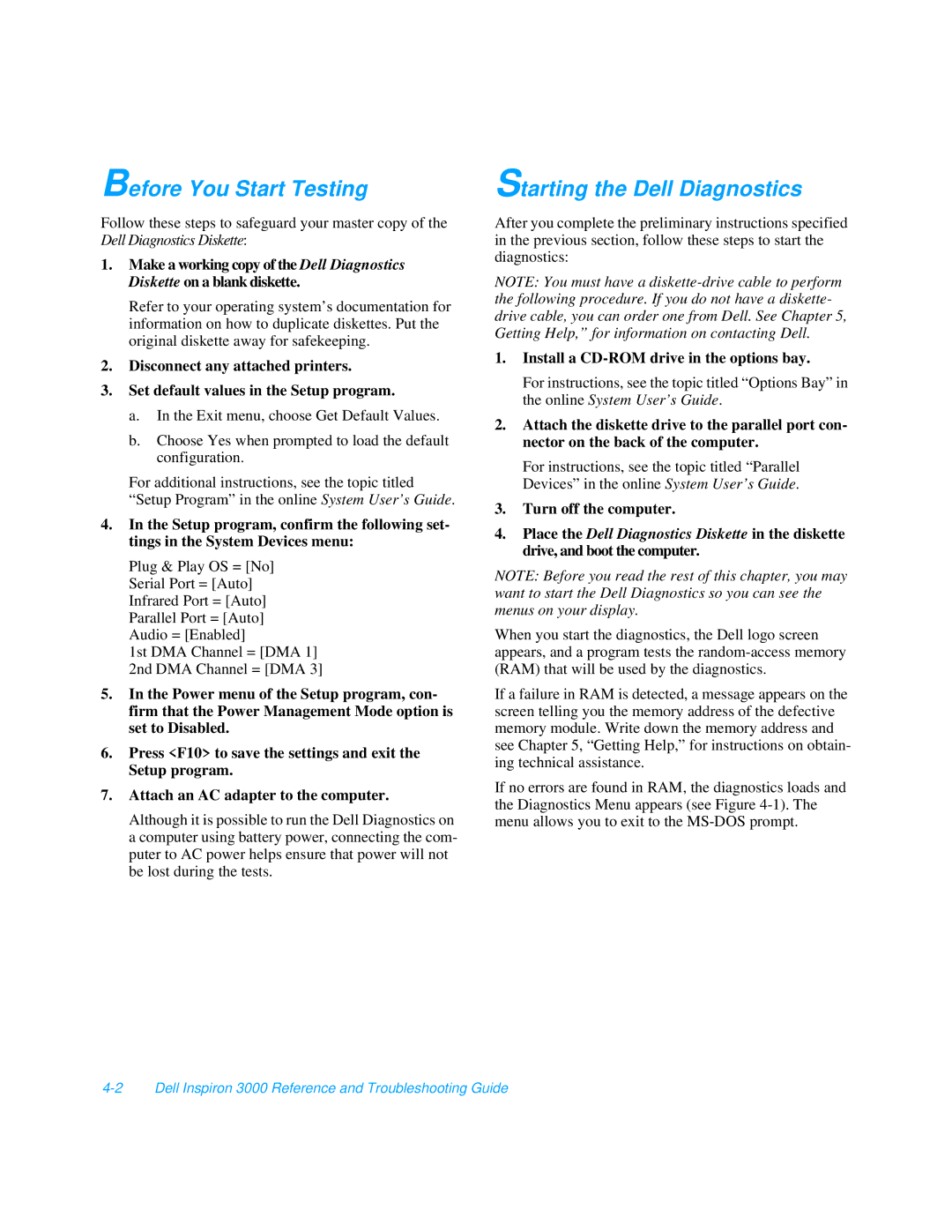Before You Start Testing
Follow these steps to safeguard your master copy of the Dell Diagnostics Diskette:
1.Make a working copy of the Dell Diagnostics Diskette on a blank diskette.
Refer to your operating system’s documentation for information on how to duplicate diskettes. Put the original diskette away for safekeeping.
2.Disconnect any attached printers.
3.Set default values in the Setup program.
a.In the Exit menu, choose Get Default Values.
b.Choose Yes when prompted to load the default configuration.
For additional instructions, see the topic titled “Setup Program” in the online System User’s Guide.
4.In the Setup program, confirm the following set- tings in the System Devices menu:
Plug & Play OS = [No] Serial Port = [Auto] Infrared Port = [Auto] Parallel Port = [Auto] Audio = [Enabled]
1st DMA Channel = [DMA 1] 2nd DMA Channel = [DMA 3]
5.In the Power menu of the Setup program, con- firm that the Power Management Mode option is set to Disabled.
6.Press <F10> to save the settings and exit the Setup program.
7.Attach an AC adapter to the computer.
Although it is possible to run the Dell Diagnostics on a computer using battery power, connecting the com- puter to AC power helps ensure that power will not be lost during the tests.
Starting the Dell Diagnostics
After you complete the preliminary instructions specified in the previous section, follow these steps to start the diagnostics:
NOTE: You must have a
1.Install a CD-ROM drive in the options bay.
For instructions, see the topic titled “Options Bay” in the online System User’s Guide .
2.Attach the diskette drive to the parallel port con- nector on the back of the computer.
For instructions, see the topic titled “Parallel Devices” in the online System User’s Guide.
3.Turn off the computer.
4.Place the Dell Diagnostics Diskette in the diskette drive, and boot the computer.
NOTE: Before you read the rest of this chapter, you may want to start the Dell Diagnostics so you can see the menus on your display.
When you start the diagnostics, the Dell logo screen appears, and a program tests the
If a failure in RAM is detected, a message appears on the screen telling you the memory address of the defective memory module. Write down the memory address and see Chapter 5, “Getting Help,” for instructions on obtain- ing technical assistance.
If no errors are found in RAM, the diagnostics loads and the Diagnostics Menu appears (see Figure
